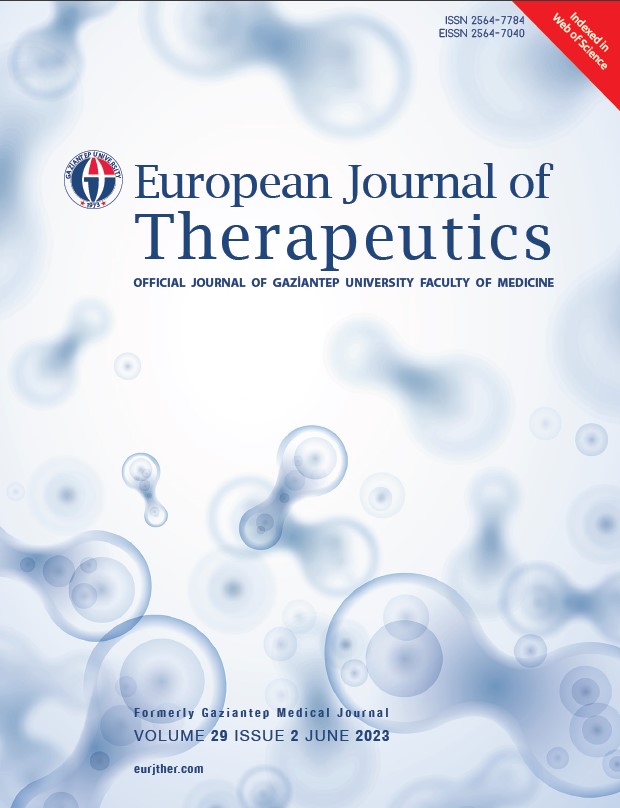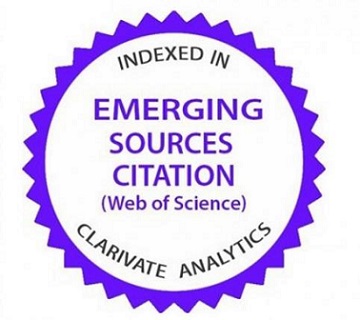Evaluation of Errors Encountered in Photogrammetric Studies on Lower Extremities
DOI:
https://doi.org/10.58600/eurjther.20232902-336.yKeywords:
photogrammetry, lower extremity, lower limb, tools of photogrammetry, errors of photogrammetryAbstract
Objective: The aim of our study is to reveal the errors that can be encountered during the shooting of photogrammetric studies on the lower extremities.
Methods: We revealed the necessary tools that used during photogrammetry measurements of the lower limb. Also, the errors have been encountered of our two previous studies performed on photogrammetry of lower limbs. The technical errors or incorrect positioning of 20 from 220 volunteers were encountered.
Results: The identified errors of 20 volunteers’ photographs related to lower limb were about the inadequate quality image, calibration, poor lightining, positioning error of trunk or parts of lower limb and clothes that cover the anatomical points affected the measurements.
Conclusion: Photogrammetry is an important and useful tool for evaluation, diagnosis, treatment, and efficacy monitoring. In anatomy, it is frequently used as a time-saving method in terms of measurement and evaluation in the laboratory, which can be applied and repeated for research. For this reason, errors that occur during the lower extremity have been reported and we think that it will be useful for studies on this part of the body and can be a guide.
Metrics
References
Μαστραπάς Α (2009) Βελτίωση ψηφιακής φωτογραφίας. University of Patras, Doctoral dissertation.
Sutton MA (1974) Sir John Herschel and the development of spectroscopy in Britain. Br J Hist Sci. 7(1):42-60. https://doi.org/10.1017/S0007087400012851
Braive MF (1973) Birth of Photography. Chest. 63(6):951. https://doi.org/10.1378/chest.63.6.951
Benjamin W (1972) A short history of photography. Screen. 13(1):5-26. https://doi.org/10.1093/screen/13.1.5
Jenkins RV (1975) Technology and the market: George Eastman and the origins of mass amateur photography. Technol Cult. 16(1):1-19. https://doi.org/10.2307/3102363
Mitchell HL, Newton I (2002) Medical photogrammetric measurement: overview and prospects. J Photogramm Remote Sens. 56(5-6):286-94. https://doi.org/10.1016/S0924-2716(02)00065-5
Petriceks AH, Peterson AS, Angeles M, Brown WP, Srivastava S (2018) Photogrammetry of human specimens: an innovation in anatomy education. J med educ curric dev. 5:2382120518799356. https://doi.org/10.1177/2382120518799356
Magnani M, Douglass M, Schroder W, Reeves J, Braun DR (2020) The digital revolution to come: Photogrammetry in archaeological practice. Am Antiq. 85(4):737-60. https://doi.org/10.1017/aaq.2020.59
Struck R, Cordoni S, Aliotta S, Pérez-Pachón L, Gröning F (2019) Application of photogrammetry in biomedical science. Biomed Vis. 1:121-30. https://doi.org/10.1007/978-3-030-06070-1_10
Lane HB (1983) Photogrammetry in medicine. Photogramm Eng Remote Sensing. 49(10):1453-6.
Ey-Chmielewska H, Chrusciel-Nogalska M, Fraczak B (2015) Photogrammetry and its potential application in medical science on the basis of selected literature. Adv Clin Exp Med. 24(4):737-41. https://doi.org/10.17219/acem/58951
Harting MT, DeWees JM, Vela KM, Khirallah RT (2015) Medical photography: current technology, evolving issues and legal perspectives. Int J Clin Pract. 69(4):401-9. https://doi.org/10.1111/ijcp.12627
Donné A (1844) Cours de microscopie complémentaire des études médicales: anatomie microscopique et physiologie des fluides de l’économie. Baillière.
Barut C, Ertilav H (2011) Guidelines for standard photography in gross and clinical anatomy. Anat Sci Educ. 4(6):348-56. https://doi.org/10.1002/ase.247
Furlanetto TS, Sedrez JA, Candotti CT, Loss JF. (2016)Photogrammetry as a tool for the postural evaluation of the spine: a systematic review. World J Orthop. 7(2):136. https://doi.org/10.5312/wjo.v7.i2.136
Bahşi I, Orhan M, Kervancioğlu P, Karatepe Ş, Sayin S (2021) Craniofacial anthropometry of healthy Turkish young adults: analysis of head and face. J Craniofac Surg. 32(4):1535-1539. https://doi.org/10.1097/SCS.0000000000007219
Bahşi I, Orhanc M, Kervancioğlu P (2021) Confusion of the Standardization in Craniofacial Soft Tissue Measurements: Frankfort Horizontal Plane or Natural Head Position?. J Craniofac Surg. 32(8):2578-9. https://doi.org/10.1097/SCS.0000000000007883
Govsa F, Nteli Chatzioglou G, Hepguler S, Pinar Y, Bedre O (2020) Variable lower limb alignment of clinical measures with digital photographs and the footscan pressure system. J Sport Rehabil. 30(3):437-44. https://doi.org/10.1123/jsr.2018-0283
Nteli Chatzioglou, G, Govsa F, Bicer A, Ozer MA, Pinar Y (2019) Physical attractiveness: analysis of buttocks patterns for planning body contouring treatment. Surg Radiol Anat. 41:133-40. https://doi.org/10.1007/s00276-018-2083-4
Lowe DG (1987) Three-dimensional object recognition from single two-dimensional images. Artif Intell. 31(3):355-95. https://doi.org/10.1016/0004-3702(87)90070-1
Pérez Pico AM, Marcos Tejedor F, de Cáceres Orellana LC, de Cáceres Orellana P, Mayordomo R (2022) Using Photogrammetry to Obtain 3D-Printed Positive Foot Casts Suitable for Fitting Thermoconformed Plantar Orthoses. Processes. 11(1):24. https://doi.org/10.3390/pr11010024
Sacco ICN, Picon AP, Ribeiro AP, Sartor CD, Camargo-Junior F, Macedo DO, et al. (2012) Effect of image resolution manipulation in rearfoot angle measurements obtained with photogrammetry. Braz J Med Biol. 45:806-10. https://doi.org/10.1590/S0100-879X2012000900003
Larsen PK, Simonsen EB, Lynnerup N (2010) Use of photogrammetry and biomechanical gait analysis to identify individuals. Proceedings of the 18th European signal processing conference; 1660-4.
Morales-Acosta L, Ortiz-Prado A, Jacobo-Armendáriz VH, González-Carbonell RA (2019) Biomechanical analysis of weeding labor in mexican farmers through the simultaneous use of photogrammetry and accelerometry. Proceedings of the 8th Latin American Conference on Biomedical Engineering and XLII National Conference on Biomedical Engineering; 2019 Oct 2-5; Cancún, México. 850-7. https://doi.org/10.1007/978-3-030-30648-9_111
Zahra SU, Kervancioğlu P, Bahşi İ (2018) Morphological and topographical anatomy of nutrient foramen in the lower limb long bones. Eur J Ther. 24(1):36-43. https://doi.org/10.5152/EurJTher.2017.147
Shilov L, Shanshin S, Romanov A, Fedotova A, Kurtukova A, Kostyuchenko E, et al. (2021) Reconstruction of a 3D Human Foot Shape Model Based on a Video Stream Using Photogrammetry and Deep Neural Networks. Future Internet. 13(12):315. https://doi.org/10.3390/fi13120315
Schneider CA, Rasband WS, Eliceiri KW (2012) NIH Image to ImageJ: 25 years of image analysis. Nat Methods. 9(7):671-5. https://doi.org/10.1038/nmeth.2089
Akcay E, Chatzioglou GN, Gayretli O, Gurses IA, Ozturk A (2021) Morphometric measurements and morphology of foramen ovale in dry human skulls and its relations with neighboring osseous structures. Medicine. 10(3):1039-46. https://doi.org/10.5455/medscience.2021.04.149
Shintaku H, Yamaguchi M, Toru S, Kitagawa M, Hirokawa K, Yokota T, et al. (2019) Three-dimensional surface models of autopsied human brains constructed from multiple photographs by photogrammetry. PloS one. 14(7):e0219619. https://doi.org/10.1371/journal.pone.0219619
Arslan D, Ozer MA, Govsa F, Kitis O (2019) Surgicoanatomical aspect in vascular variations of the V3 segment of vertebral artery as a risk factor for C1 instrumentation. J Clin Neurosci. 68:243-9. https://doi.org/10.1016/j.jocn.2019.07.032
Adanir SS, Bakşi YE, Bahşi I, Kervancioğlu P, Yalçin ED, Orhan M (2022) Evaluation of the Cranial Aperture of the Optic Canal on Cone-Beam Computed Tomography Images and its Clinical Implications for the Transcranial Approaches. J Craniofac Surg. 33(6):1909-13. https://doi.org/10.1097/SCS.0000000000008577
Ayvaz DK, Kervancıoğlu P, Bahşi A, Bahşi İ (2021) A radiological evaluation of lumbar spinous processes and interspinous spaces, including clinical implications. Cureus. 13(11):e19454. https://doi.org/10.7759/cureus.19454
Bahşi İ, Orhan M, Kervancıoğlu P, Yalçın ED (2019) The anatomical and radiological evaluation of the Vidian canal on cone-beam computed tomography images. Eur Arch Otorhinolaryngol. 276:1373-83. https://doi.org/10.1007/s00405-019-05335-6
Downloads
Published
How to Cite
License
Copyright (c) 2023 European Journal of Therapeutics

This work is licensed under a Creative Commons Attribution-NonCommercial 4.0 International License.
The content of this journal is licensed under a Creative Commons Attribution-NonCommercial 4.0 International License.


















